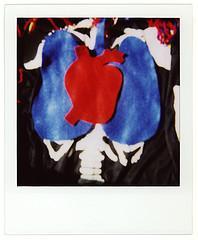
Photo by Charlyn Wee.
As a Baby Boomer, I have heard chatter about the value of cardiovascular fitness since Jane Fonda first marketed her aerobics videos.However, I just investigated the assessment tools for VO2 and VO2 Max in my efforts to better understand biomarkers of health and longevity.
This post is part of a series on Biomarkers for Health.
By looking at the tools used by researchers to measure fitness and pace of aging, I'm trying to better understand lab results that doctors might order for me or for my Greatest Generation parents.
I am also trying to use midlife as a time to prepare for higher quality of life during my 70s, 80s and beyond.
For this reason, I decided to read a bit about various VO2 tests and VO2 Max tests as measures of cardiorespiratory fitness.
While I could describe more technically the way oxygen is used by the body to fuel exercise, let me focus for now on the measurements of oxygen use during exercise.
In order to get good data on oxygen use, a person would have to go to a lab that puts an oxygen mask on the person for collecting data while doing vigorous exercise. I don't think my insurance will cover "blog research" as a medical need. Consequently, I used an at-home test that is less accurate.
I decided to perform the 1 Mile Walk Test and plug the values into the VO2 Max Calculator provided on Shape Sense's site, I interpreted my results with their chart.
It turns out that I have a lot of room for improvement.
The chart indicates that for my age, my VO2 Max score should be 29-30 ml/kg/min to be in the GOOD range.
Women’s Age Poor Fair Good Excellent Superior
50 yo -59 yo ≤ 24 25 - 28 29 - 30 31 - 34 35+
Source: The Cooper Institute for Aerobics Research, The Physical Fitness Specialist Manual, Dallas, TX, 2005
via Shape Sense.
My score was 22!
It took me 19 minutes and 20 seconds to briskly walk 1 mile (no running allowed), and immediately after my pulse for 10 seconds was 20 (which is about 120 hpm). That and my age/gender/weight resulted in my above mentioned score of 22.
I'm 3 points below Fair in a 11 point range from crap to glorious (24 to 35).
Granted, VO2 Max levels peak between 18 and 25 and are higher for men. A 20-year-old male athlete may have a VO2 Max score in the 50s.
I might feel a little better knowing that the highest recorded VO2 Max scores for men range into the 80s and 90s. The highest scores for women range in the 60s and 70s. These people are statistical outliers, so we'll just bow to them and return to our regularly scheduled lives.
However, the scale I'm using (24-34) is already calibrated for midlife women. But--let me repeat--I scored 2 points below that at 22 ml/kg/min.
Ouch.
I walk about 4 miles a day on average, but it's time for me to sprinkle in a little running now and then. This may be time for me to return to my spin classes.
I wear a heart monitor when participating in spin cycling because it's very easy to work too hard there. I have to take it a little easier than the twentysomethings who frequent those classes.
There are some watches available that claim to measure VO2 Max levels. However, I think that I will compare apples to apples and just redo the 1 Mile Walk Test once a month to see if I can improve my score by working a little harder (but not too hard) at the gym.
Related:
18 Biomarkers for Health
HbA1c: Biomarker of Health
Waist-Hip Ratio: Biomarker of Health

